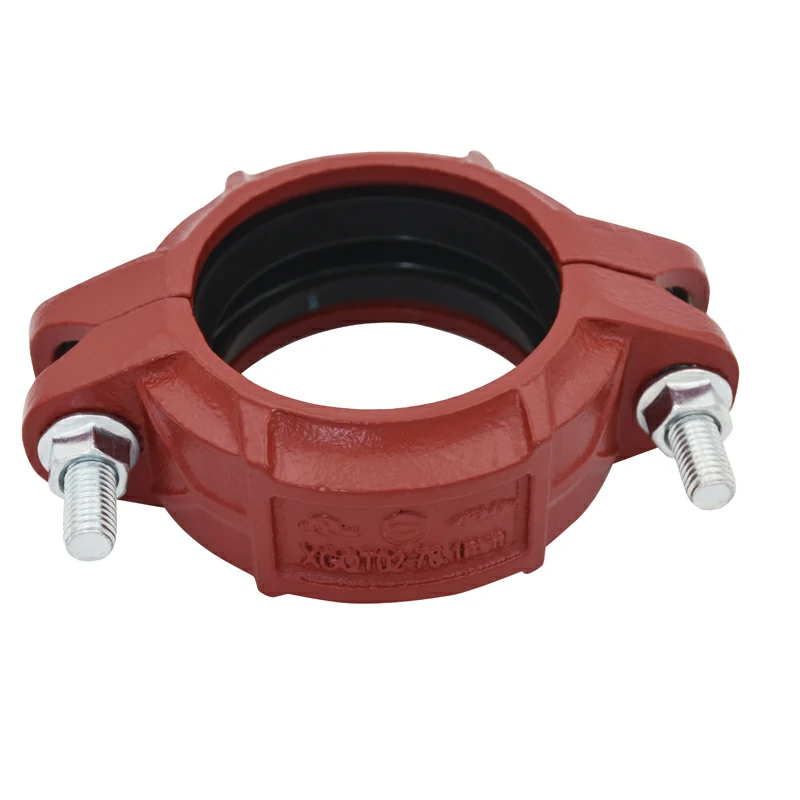Flanged ductile iron fittings are robust and reliable components that play a vital role in industrial piping systems. Their strength, corrosion resistance, and versatility make them ideal for various applications, from water and wastewater treatment to chemical processing and manufacturing. Meanwhile, we consider to introduce about flexible shaft couplings and rigid coupling.
Flexible shaft couplings and rigid couplings offer distinct advantages and disadvantages, making them suitable for different applications. Flexible shaft couplings are ideal for situations where misalignment, vibration, or shock loads are concerns, as they protect connected components and extend their lifespan.
Understanding Flanged Ductile Iron Fittings

Flanged ductile iron fittings are pipe connectors that incorporate flanges, which are flat, circular protrusions with bolt holes. These flanges are attached to the ends of the fitting, enabling easy and secure bolting to other flanged components, such as pipes, valves, and pumps. The use of ductile iron, an alloy of iron, carbon, and other elements, provides exceptional strength, ductility, and resistance to corrosion, making these fittings ideal for demanding industrial environments.
Types of Flanged Ductile Iron Fittings
The versatility of flanged ductile iron fittings extends to various types, each designed for specific applications:
- Elbows: These fittings facilitate changes in pipe direction, ensuring smooth fluid flow and efficient system design.
- Tees: T-shaped fittings enable the branching or merging of fluid streams, providing flexibility in piping configurations.
- Crosses: Cross-shaped fittings allow for the connection of pipes from four different directions, creating intricate piping networks.
- Reducers: Also known as reducers, these fittings facilitate transitions between pipes of different diameters, accommodating changes in pipe size.
- Caps: End caps effectively seal open pipe ends, preventing leakage and maintaining system integrity.
- Unions: Threaded connectors known as unions simplify maintenance and repairs by enabling quick assembly and disassembly of pipe sections.
- Flanges: Flanges serve as the connection points for bolting pipes, valves, and other flanged components, ensuring secure and leak-proof joints.
Flexible Shaft Couplings
Flexible shaft coupling types, also known as elastomeric couplings, incorporate flexible elements such as rubber, polyurethane, or metal bellows to accommodate misalignment, vibration, and shock loads between connected shafts.
Advantages of Flexible Shaft Couplings:
- Accommodation of Misalignment: Flexible shaft couplings compensate for misalignment between shafts, which can occur due to manufacturing tolerances, thermal expansion, or structural deflection.
- Vibration Dampening: The flexible elements effectively absorb and dampen vibrations, reducing noise and preventing damage to sensitive equipment.
- Shock Load Absorption: Flexible couplings cushion shock loads, protecting connected components from sudden impacts or torque fluctuations.
- Extended Equipment Life: By absorbing misalignment, vibration, and shock loads, flexible couplings contribute to the longevity of connected machinery.
Rigid Couplings
Rigid couplings, in contrast to flexible shaft couplings, provide a fixed and non-yielding connection between shafts. They are typically made of solid materials such as metal or composite and transmit torque without any flexibility.
Advantages of rigid coupling types:
- High Torque Capacity: Rigid couplings can transmit higher torque loads compared to flexible couplings due to their rigid construction.
- Precise Alignment: Rigid couplings ensure precise alignment between connected shafts, which is crucial for certain applications such as high-speed machinery.
- Compact Design: Rigid couplings are generally more compact in size compared to flexible shaft couplings.
- Cost-Effective: Rigid couplings are typically more cost-effective than flexible shaft couplings.
